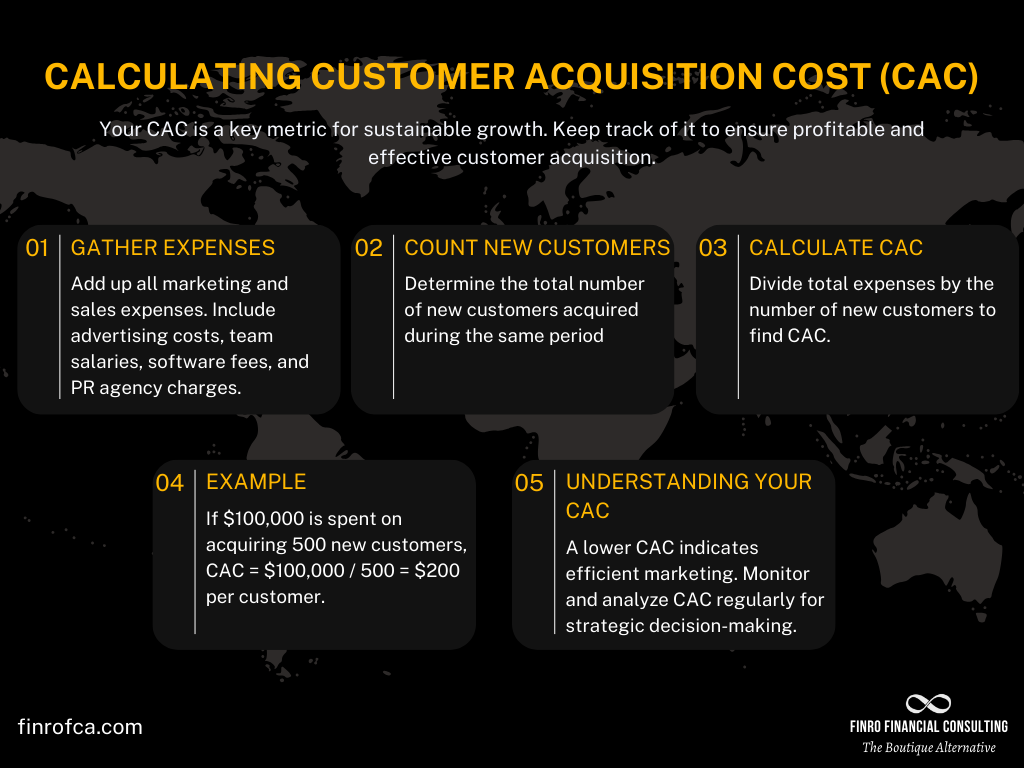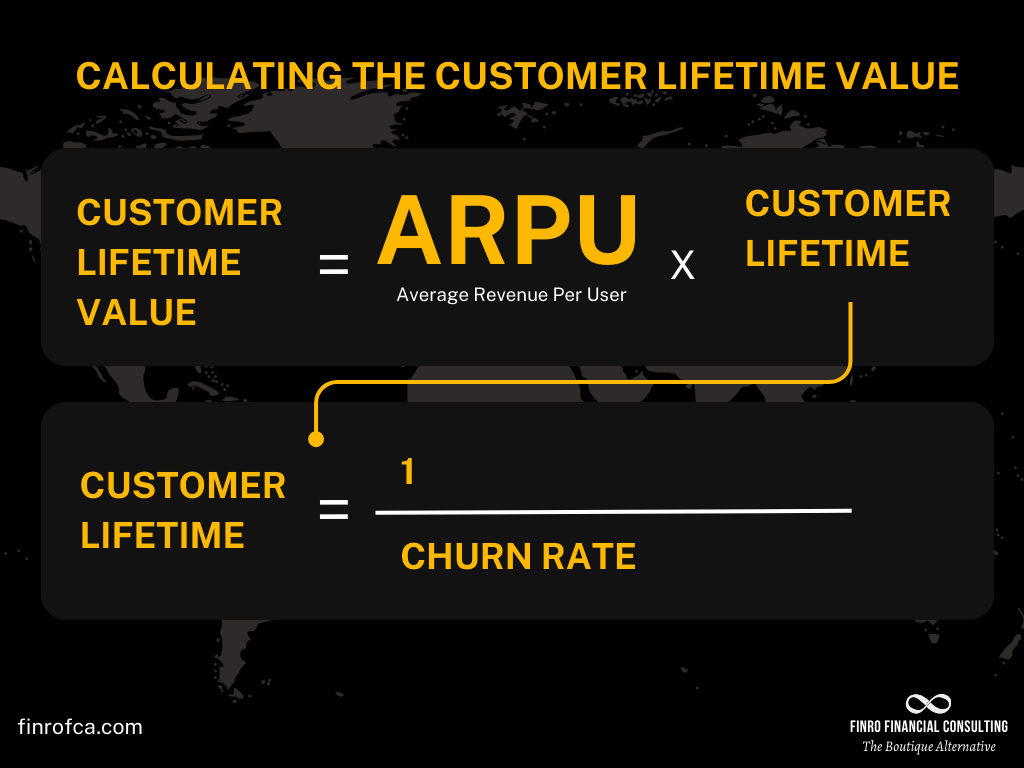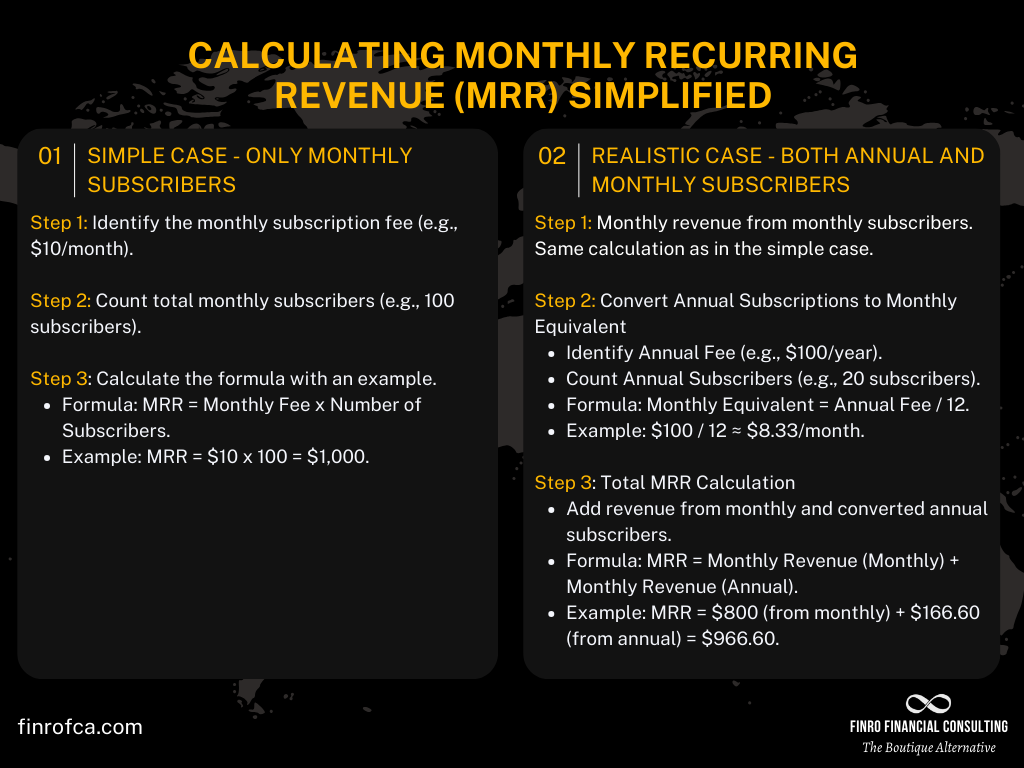5 Key Metrics Investors Look For in Your Startup Financial Model
By Lior Ronen | Founder, Finro Financial Consulting
When investors evaluate a startup, they don't just look at the product, the team, or the market potential—they dig deep into the numbers. A well-structured financial model is one of the most powerful tools a founder can use to show investors that they understand their business inside and out.
But not all numbers carry the same weight. Certain metrics stand out because they offer direct insight into the financial health, growth potential, and sustainability of a startup. These metrics are not just benchmarks; they shape an investor’s decision-making process.
In this article, we’ll break down five key metrics that investors focus on when reviewing a startup’s financial model. Understanding these metrics and optimizing them will not only increase your chances of securing funding but also strengthen your overall business strategy.
Startups need to focus on key financial metrics to attract investors and ensure long-term growth. Burn rate measures how quickly a business spends its cash, while runway determines how long it can operate before requiring more funds. Gross margin reflects operational efficiency and profitability, and the ratio of Customer Acquisition Cost (CAC) to Lifetime Value (LTV) shows whether acquiring customers is sustainable.
Lastly, Monthly Recurring Revenue (MRR) growth demonstrates traction and scalability, signaling that the business is well-positioned for future success. Prioritizing these metrics helps founders build sustainable businesses and increases investor confidence.
Burn Rate
Before diving into revenue projections or profit margins, investors want to know how quickly your startup is burning through cash. Burn rate is one of the first metrics they examine because it directly reflects how well you manage expenses relative to your available funds.
Let’s break down the burn rate and why it’s critical to keep it under control.
Definition
Burn rate refers to how a startup spends its cash reserves. It’s calculated as the total monthly operating expenses, including salaries, rent, marketing, and other overhead costs. It answers the question: “How much money are we burning through every month?”
Why Investors Care
Investors use burn rates to gauge a startup's financial discipline and sustainability. A high burn rate might suggest that a startup is spending too aggressively and could run out of money before achieving key milestones.
On the other hand, a controlled burn rate shows that the startup is mindful of its cash flow and is stretching its resources to maximize the runway. Investors want to see that a startup has enough cash to sustain operations and hit milestones before needing another round of funding.
How to Optimize Burn Rate
To maintain a healthy burn rate, founders need to manage their spending without stifling growth carefully. Here are some ways to reduce burn:
Negotiate contracts: Renegotiating with vendors or service providers can help lower operational costs.
Cut unnecessary expenses: Eliminate non-essential costs that don’t directly contribute to growth or core operations.
Focus on high-value activities: Allocate resources toward initiatives that bring immediate or long-term value, such as product development or customer acquisition.
Balancing a lean burn rate with a growth-focused mindset can give investors confidence that their funds will be used wisely, increasing the likelihood of securing investment.
Runway
Once investors understand how quickly you're burning through cash, the next question is: how long can you keep going before running out of money?
This is where runway comes into play. It’s a critical metric that gives founders and investors a clear view of how much time a startup has to hit key milestones before raising more funds.
Definition
Runway is calculated by dividing a startup's cash by its monthly burn rate. It answers the question, “How many months can we keep operating at the current burn rate?”
For example, if a startup has $500,000 in the bank and a monthly burn rate of $50,000, the runway is 10 months.
What Investors Look For
Investors use the runway to assess how much breathing room a startup has to execute its business plan. A short runway (less than 6 months) signals high risk, as the company will need additional funding soon.
On the other hand, a longer runway (12-18 months) shows the startup has time to iterate, reach milestones, and potentially become profitable or gain enough traction to attract the next round of investment.
Investors also want to see that a startup's runway aligns with its milestones. For example, if you plan to launch a product in 9 months, having a 10-month runway won’t cut it. You'll need an extra cushion to account for delays or unexpected expenses. Showing investors that your runway gives you enough time to achieve key goals increases their confidence in your ability to execute.
Ideal Runway Length
While there’s no one-size-fits-all answer, most investors prefer startups to have at least 12-18 months of runway. This gives founders enough time to navigate the unpredictable nature of growing a business, test product-market fit, or gain meaningful customer traction.
How to Extend Your Runway
There are two main levers to extend your runway: increasing cash on hand or reducing your burn rate. Here are a few strategies to consider:
Secure additional funding early: Raise capital before you hit critical low points.
Reduce expenses: Lower operational costs by scaling down or deferring non-essential projects.
Boost revenue: Prioritize sales efforts or early product launches to bring in cash sooner.
Extending runway provides your startup with more time to execute, reduces the pressure of needing an immediate funding round, and shows investors you can manage resources effectively.
Gross Margin
While burn rate and runway give investors a snapshot of how long your startup can operate, gross margin tells them how efficiently you’re turning revenue into profit.
Gross margin is a key indicator of financial health because it shows how much money is left over after covering the direct costs of producing your product or delivering your service. Investors want to see a healthy gross margin because it signals that your startup has a profitable business model.
Definition
Gross margin is the percentage of revenue remaining after subtracting the cost of goods sold (COGS).
The formula is straightforward: Gross Margin = (Revenue - COGS) / Revenue
For example, if your startup generates $100,000 in revenue and incurs $40,000 in COGS, your gross margin is 60%. This means 60% of your revenue contributes to covering other business expenses, such as marketing, salaries, and overhead.
Why Investors Focus on This
Investors see gross margin as a direct indicator of profitability and long-term sustainability. A higher gross margin means your business is operating efficiently, with a significant portion of revenue left over after covering production costs.
Conversely, a low gross margin can suggest that the business is under-pricing its product, facing high production costs, or lacking operational efficiency. If the margin is too thin, the startup might struggle to scale or reinvest in growth.
For early-stage startups, demonstrating an upward trend in gross margin can be equally important. Even if margins are tight at the beginning, investors want to see that you have a clear path to improving them over time.
How to Improve Gross Margin
There are several strategies startups can use to increase gross margin:
Negotiate better deals with suppliers: Lowering the cost of goods sold by negotiating better rates with suppliers can have an immediate impact on gross margin.
Increase pricing strategically: Charging more for your product or service without losing customers can significantly boost your gross margin. This often involves improving product value or focusing on premium customers.
Improve operational efficiency: Streamlining processes and reducing waste in production or service delivery can lower costs and improve margins.
Shift to higher-margin products or services: If certain offerings have lower margins, consider shifting focus to products or services with higher profitability potential.
By optimizing gross margin, startups can not only improve their bottom line but also make their business model more attractive to investors who prioritize long-term profitability.
Customer Acquisition Cost (CAC) vs. Lifetime Value (LTV)
When investors assess the sustainability and profitability of a startup, they often look at the balance between how much it costs to acquire a customer (CAC) and how much revenue that customer generates over time (LTV).
This ratio is a critical indicator of the efficiency of your business model, especially for startups with a subscription or recurring revenue model. A favorable CAC-to-LTV ratio tells investors that you’re bringing in customers at a reasonable cost and generating enough revenue to support long-term growth.
Definition of CAC
Customer Acquisition Cost (CAC) is the total cost associated with acquiring a new customer, including marketing, sales, and any related overheads.
The formula is:
CAC = Total Marketing and Sales Costs / Number of New Customers Acquired
For example, if you spend $50,000 on marketing and sales in a month and acquire 500 new customers, your CAC is $100 per customer.
Definition of LTV
Lifetime Value (LTV) represents the total revenue a customer is expected to generate over the course of their relationship with your business.
To calculate LTV, you typically multiply the average revenue per customer by the customer lifespan: LTV = Average Revenue per Customer × Customer Lifespan
For instance, if a customer pays $100 per month and stays for 24 months, the LTV is $2,400.
Why Investors Compare CAC to LTV
Investors look at the CAC-to-LTV ratio because it shows whether acquiring a customer is profitable over the long term. Ideally, the LTV should be at least 3 times higher than CAC. A 3:1 LTV-to-CAC ratio signals that your business is efficiently acquiring customers and profiting from them over time.
If the ratio is lower (e.g., 1:1 or 2:1), it indicates that you're spending too much to acquire customers relative to the value they bring, which could limit profitability and growth potential.
A favorable CAC-to-LTV ratio also indicates scalability. Investors want to see that if you were to increase marketing and sales efforts, you could continue acquiring customers without dramatically increasing costs, ensuring that growth doesn’t come at the expense of profitability.
How to Balance CAC and LTV
To maintain a healthy CAC-to-LTV ratio, startups need to focus on both reducing acquisition costs and increasing the value of each customer. Here are some strategies for optimizing each metric:
Reduce CAC:
Improve targeting: Refine your marketing strategy to attract more qualified leads and avoid wasting resources on unfit customers.
Increase referral marketing: Encourage existing customers to refer new ones, which can lower acquisition costs significantly.
Optimize conversion funnels: Streamline the sales process to reduce the cost per acquisition, whether through better messaging, improved website design, or shorter sales cycles.
Increase LTV:
Boost customer retention: Retaining customers longer increases their lifetime value. This can be achieved through exceptional customer service, regular product updates, or loyalty programs.
Upsell and cross-sell: Offer complementary products or premium features to increase the revenue generated from each customer.
Increase pricing: If you provide significant value, consider increasing your prices, especially for premium customers or new features.
Achieving a strong balance between CAC and LTV not only improves profitability but also signals to investors that your business is well-positioned for sustainable growth.
| Metric | Definition | Why It Matters | How to Improve |
|---|---|---|---|
| Customer Acquisition Cost (CAC) | Total marketing & sales costs divided by the number of new customers acquired. | Shows how efficiently a startup acquires customers. |
|
| Lifetime Value (LTV) | Average revenue per customer multiplied by the customer’s lifespan. | Demonstrates how much revenue a customer generates over time. |
|
| LTV to CAC Ratio | LTV should be at least 3 times higher than CAC (3:1 ratio). | A favorable ratio signals long-term profitability and business scalability. | Balance both metrics to ensure efficient growth and profitability |
Monthly Recurring Revenue (MRR) Growth
For subscription-based businesses, Monthly Recurring Revenue (MRR) is one of the most important metrics for tracking stable, predictable income.
It provides a clear view of your business’s ability to generate consistent revenue from your customer base. Investors closely monitor MRR growth to evaluate a startup's traction and scalability, making it a critical metric for fundraising efforts.
Definition
MRR refers to the total predictable revenue that a business expects to generate on a monthly basis from its customers, primarily through subscriptions or recurring payments.
The formula for MRR is straightforward:
MRR = Number of Active Customers × Average Revenue per Customer (ARPU)
For example, if you have 200 active customers each paying $50 per month, your MRR is $10,000. This metric simplifies financial forecasting by focusing on stable, repeatable revenue streams rather than one-off sales.
Investor Focus on MRR Growth
MRR growth is an essential metric because it demonstrates a startup’s ability to acquire new customers and retain existing ones over time. Investors are particularly interested in the growth rate of MRR, as it indicates whether a startup is scaling efficiently and whether its product or service has strong market demand.
A consistent increase in MRR signals that the business is moving in the right direction, acquiring and retaining customers successfully. A stagnant or declining MRR, on the other hand, raises red flags about customer churn or product-market fit. Investors want to see upward momentum, with ideally a combination of both new customer acquisition and expansion revenue from existing customers (e.g., through upsells or additional services).
How to Drive MRR Growth
To drive MRR growth, startups need to focus on acquiring new customers while also increasing the value of existing ones. Here are a few effective strategies:
Improve Customer Acquisition: Invest in targeted marketing campaigns, refine your sales funnel, and leverage partnerships to attract new customers. Expanding your customer base is the fastest way to boost MRR.
Reduce Churn: Retaining existing customers is just as important as acquiring new ones. Focus on reducing churn by improving customer support, offering product enhancements, and maintaining strong communication with your users.
Increase Average Revenue per User (ARPU): Explore opportunities to upsell or cross-sell to your existing customer base. Introducing premium features, service tiers, or additional products can help boost ARPU, which will, in turn, increase MRR.
Expand to New Markets: If your current market is saturated or growth has slowed, consider expanding your product or service to new geographic regions or customer segments.
By consistently growing MRR, startups not only demonstrate product-market fit but also make their business more attractive to investors, who are always on the lookout for scalable and predictable revenue streams.
Conclusion
Bringing It All Together
The metrics we’ve covered—burn rate, runway, gross margin, CAC vs. LTV, and MRR growth—are essential in helping investors understand your startup’s financial health and potential. Each metric offers unique insights into how efficiently your business operates, how scalable it is, and whether it’s positioned for long-term success.
As a founder, focusing on these metrics will not only make your startup more attractive to investors but will also help you build a more sustainable and profitable business.
Next Steps for Founders
Understanding these metrics is just the beginning. It’s crucial to monitor them regularly, refine your financial model, and align your business strategy accordingly.
Whether you’re preparing for a funding round or simply aiming to improve your financial outlook, having strong numbers in these areas will increase your chances of success. Don’t overlook the importance of communicating these metrics clearly in your investor presentations, as they are key indicators of your startup’s potential.
Call to Action
If you’re looking for expert guidance on building a robust financial model or preparing for an investor pitch, we’re here to help.
Our services focus on startup valuation, financial modeling, and due diligence, ensuring that your startup is well-prepared to attract the funding it needs. Contact us to learn more about how we can support your growth.
Key Takeaways
Burn Rate: Burn rate shows how fast your startup spends cash and is a critical metric for investors.
Runway: Runway indicates how long your startup can operate before needing more funds, ideally 12-18 months.
Gross Margin
Gross margin measures profitability from core operations and signals business efficiency to investors.CAC vs. LTV
A favorable LTV-to-CAC ratio (3:1) ensures customer acquisition is profitable and sustainable long-term.MRR Growth
Growing Monthly Recurring Revenue (MRR) indicates strong customer retention and scalability, boosting investor confidence.










